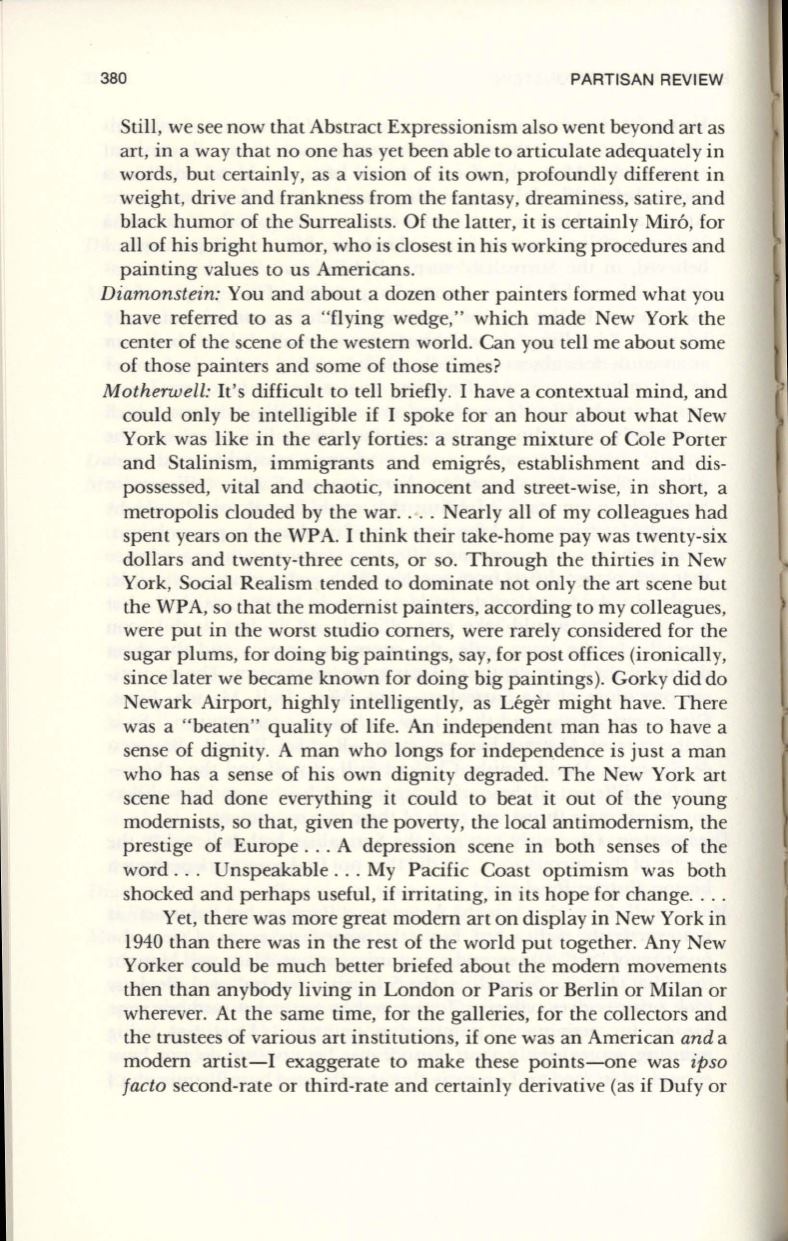
380
PARTISAN REVIEW
Still, we see now that Abstract Expressionism also went beyond art as
art, in a way that no one has yet been able to articulate adequately in
words, but certainly, as a vision of its own, profoundly different in
weight, drive and frankness from the fantasy, dreaminess, satire, and
black humor of the Surrealists. Of the latter, it is certainly Mir6, for
all of his bright humor, who is closest in his working procedures and
painting values to us Americans.
Diamonstein:
You and about a dozen other painters formed what you
have referred
to
as a "flying wedge," which made New York the
center of the scene of the western world. Can you tell me about some
of those painters and some of those times?
Motherwell:
It's difficult
to
tell briefly. I have a contextual mind, and
could only be intelligible if I spoke for an hour about what New
York was like in the early forties: a strange mixture of Cole Porter
and Stalinism, immigrants and emigres, establishment and dis–
possessed, vital and chaotic, innocent and street-wise, in short, a
metropolis clouded by the war.... Nearly all of my colleagues had
spent years on the WPA. I think their take-home pay was twenty-six
dollars and twenty-three cents, or so. Through the thirties in New
York, Social Realism tended to dominate not only the art scene but
the WPA, so that the modernist painters, according to my colleagues,
were put in the worst studio corners, were rarely considered for the
sugar plums, for doing big paintings, say, for post offices (ironically,
since later we became known for doing big paintings). Gorky did do
Newark Airport, highly intelligently, as Leger might have. There
was a "beaten" quality of life. An independent man has to have a
sense of dignity. A man who longs for independence is just a man
who has a sense of his own dignity degraded. The New York art
scene had done everything it could to beat it out of the young
modernists, so that, given the poverty, the local antimodernism, the
prestige of Europe ... A depression scene in both senses of the
word ... Unspeakable ... My Pacific Coast optimism was both
shocked and perhaps useful, if irritating, in its hope for change.. . .
Yet, there was more great modern art on display in New York in
1940 than there was in the rest of the world put together. Any New
Yorker could be much better briefed about the modern movements
then than anybody living in London or Paris or Berlin or Milan or
wherever. At the same time, for the galleries, for the collectors and
the trustees of various art institutions, if one was an American
and
a
modern artist-I exaggerate to make these points-one was
ipso
facto
second-rate or third-rate and certainly derivative (as if Dufy or


